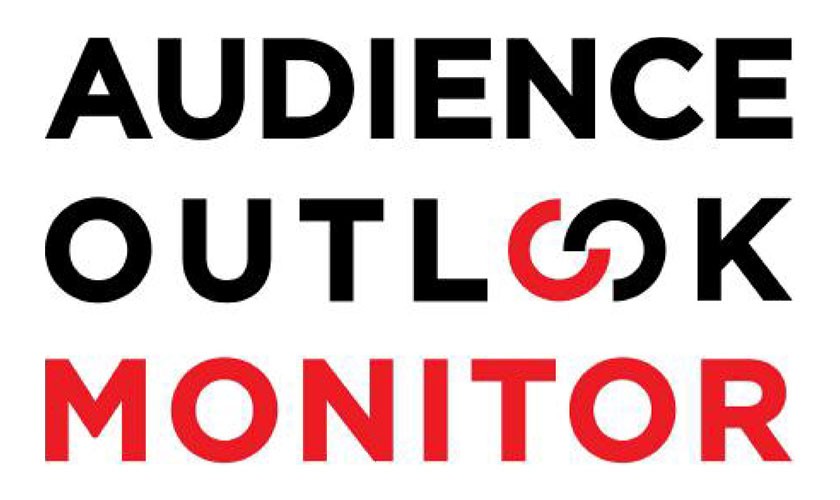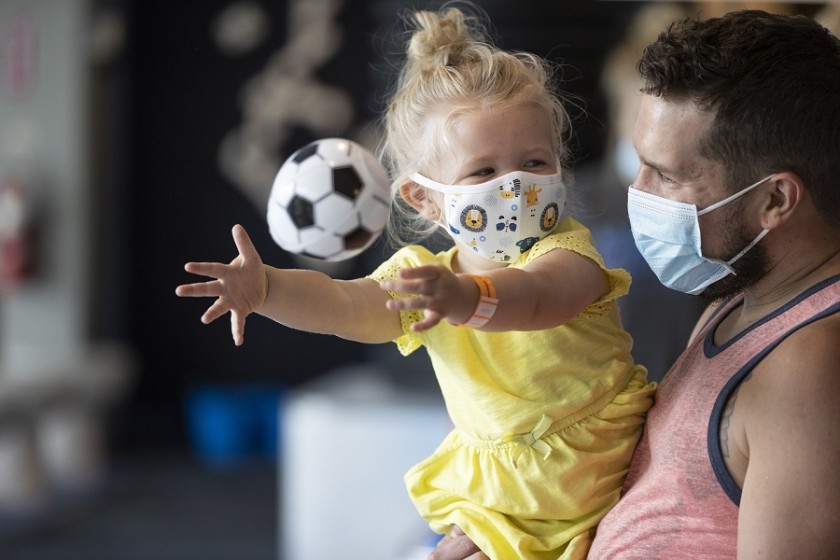Impacts of the Pandemic & How Audiences Interact with the Arts
A summary of Pittsburgh’s COVID-19 Audience Outlook Monitor survey data from September 2020-2021
After a full year of data collection and responses from more than 12,000 individuals, it’s clear that the impact of the pandemic on our interaction with the arts and culture sector will continue to change. In September 2020, the Greater Pittsburgh Arts Council commissioned research firm WolfBrown to implement its COVID-19 Audience Outlook Monitor study with a cohort of 27 arts and cultural organizations in the Pittsburgh region.
This summer, we released a summary report of Pittsburgh’s data from September 2020 through May 2021. Today, we have access to our final round of data from September 2021, completing a full year of data collection through the Audience Outlook Monitor.
You can read the latest September summary report by WolfBrown here. We’ll break down our own findings below.
- During Phase 1 of the study (September 2020 to March 2021) the survey was deployed five times with a total of 7,120 responses collected from 24 organizations.
- During Phase 2 of the study (May 2021 to September 2021), the survey was deployed three times with a total of 5,266 responses collected from 15 organizations.
Overall Trends in Arts Engagement & Safety Preferences during the Pandemic
1. Pittsburgh arts audiences appear to have higher vaccination rates than the general population.
Since the Audience Outlook Monitor survey began asking respondents for their vaccination status in May 2021, Pittsburgh arts audiences and visitors have reported being partially or fully vaccinated at higher rates than the Pennsylvania and national averages. In the final deployment this September, 89% of respondents indicated they were partially or fully vaccinated. That number is slightly higher than comparable rates for Pennsylvanians ages 12 and older (87%) and over ten percentage points higher than the United States average for residents 12 and older (77%) as of October 2021.(1)
That said, audience and visitor vaccination rates do not appear likely to increase significantly under the current circumstances. Though presumably due to survey sample fluctuations, audiences and visitors reported a slightly lower vaccination rate in September 2021 compared to July (89% vs. 93%). In addition, of the 11% of respondents who reported not being vaccinated in September, 91% said they would “probably” or “definitely” not get the COVID-19 vaccine, up from 88% in July and 72% in May.
2. Sentiments about COVID-19 safety measures for in-person programming remain mixed.
Through the final deployment of the study, opinions about various COVID-19 safety measures continued to vary. Though masking and proof-of-vaccination policies were most often named as “prerequisites” for attendance, these policies were also viewed as “deal breakers” for other guests. For example, universal masking for indoor attendance was a prerequisite for 44% of performing arts audiences and 71% of museum attendees in September 2021. At the same time, 18% of performing arts audiences and 9% of museum visitors said masks were a deal breaker.
Proof-of-vaccination policies appear to be gaining favor over time, though still face some resistance from both unvaccinated and vaccinated audience members and visitors. For performing arts audiences, the percentage who would “only” or “more likely” attend in-person events with this policy increased from 60% to 65% between July and September 2021. Another 19% of respondents would not attend with this policy. Museum visitor sentiments on vaccination-only admittance were collected for the first time in September 2021. Here, 74% would “only” or “more likely” attend museums with this policy, while 10% would not attend.
As with all insights from this study, interpretation and application of this data should take into consideration the study’s limitations and sample characteristics (listed below).
3. Participation in virtual programming is steadily declining.
In early deployments of the survey, almost half of respondents reported engaging with online cultural programs in the past two weeks, and 20% reported paying for online programs. Digital engagement steadily and consistently declined over time. By September 2021, only 29% of respondents had engaged with online cultural programs in the past two weeks, and only 11% had paid for those programs.
Fluctuations in Case Rates and New COVID-19 Variants Impact Arts Attendance
Though audiences and visitors are returning to in-person programs, case rates and surges in new variants do appear to impact comfortability of doing so. From January to July 2021, survey deployments indicated slowly but steadily increasing reports of in-person visits to performing arts and museum organizations. In September 2021, 47% of performing arts audiences and 51% of museum visitors reported that they have already attended at least one in-person program. Reports of recent performing arts attendance increased from July, while reports of museum attendance slightly decreased.
Despite increases in overall attendance, respondents also reported feeling less comfortable visiting cultural facilities in September 2021 in comparison to July and May 2021. This decrease in comfortability correlates with a rise in COVID-19 cases due to the nationwide surge of the Delta variant in late summer 2021.(2) Respondents also felt less confident in the final survey deployment that the vaccine provided them with enough protection to resume their normal activities (65% vs. 86% in July). This suggests that COVID-19 case rates, not just vaccine rates or safety measures, may impact willingness to attend in-person cultural events.
Sentiments about restaurant attendance provide clues to how arts organizations might help audiences and attendees feel safer amid fluctuating case rates.
In every survey deployment from September 2020 to September 2021, more respondents indicated that they had recently eaten in local restaurants than attended in-person cultural activities. In the final survey deployment, WolfBrown asked respondents to share opinions on why some people feel comfortable going to restaurants but not theaters. Respondents named the ability to social distance between groups, a shorter length of stay, and freedom to move around if uncomfortable (among others) as possible reasons for this phenomenon. Going forward, cultural institutions may explore opportunities to adopt these favorable aspects of restaurant visits to help audiences and visitors feel safer as they continue their return to in-person programming.
Audiences and Limitations
Respondent Pool
This study was designed to survey local arts audiences via email. All survey respondents had either purchased a ticket or membership offered within the last three years by the organization that sent them the survey. All respondents live in Pennsylvania, West Virginia, or Ohio for at least part of the year.
It’s important to note that this data is from active arts audiences, not the general population. Because of the audiences surveyed, we see high levels of commitment to arts and cultural organizations. Further, the demographic breakdown of respondents reflects the audiences of the participating organizations and does not necessarily match the demographic breakdown of residents.
Looking at all rounds of data collection, we see that the average age of survey respondents is 56, with 35% of respondents reporting that they are over 65. The survey sampling became slightly less female dominant over time (63% in Phase 1 compared to 58% in Phase 2) but otherwise remained steady. Regarding the racial/ethnic breakdown of survey respondents, 94% identified as white; 2% identified as Black or African American; 1% identified as Asian or Pacific Islander; 1% identified as Hispanic, Latino/a, or Latinx; and less than 1% identified as Middle Eastern, American Indian, or Native Alaskan. Two percent identified as a race or ethnicity not listed and chose to write in their identity.
Study Limitations
The Arts Council recognizes that this data represents only a slim piece of the overall picture regarding the attitudes and opinions of all arts audiences in our region. This white-leaning demographic breakdown could be attributed to several issues within the arts community, including lack of access to Internet or email to take the surveys, lack of interest in taking online surveys, predominantly white and older audiences attending in-person events, and lack of diversity in the organizations represented within the survey cohort.
In addition, the nature of the Audience Outlook Monitor also imposed participation requirements that limited the type of organizations that could participate. These requirements included an email list of at least 3,000 people. Survey questions were also not catered to all art disciplines or art education. Finally, some organizations declined participation in this report simply due to lack of capacity during the pandemic.
Sources:
- “COVID-19 Vaccinations in the United States,” Center for Disease Control and Prevention, Accessed October 20, 2021, https://covid.cdc.gov/covid-data-tracker/#vaccinations.
- “Trends in Number of COVID-19 Cases and Deaths in the US Reported to CDC, by State/Territory,” Centers for Disease Control and Prevention, Accessed October 20, 2021, https://covid.cdc.gov/covid-data-tracker/#trends_dailycases.



